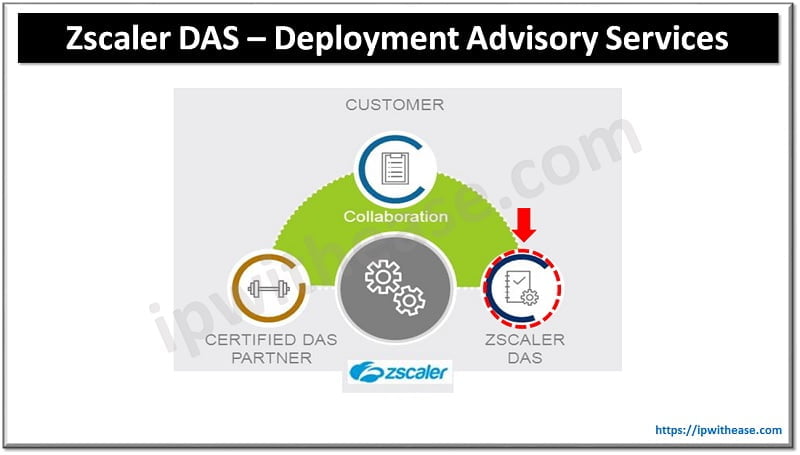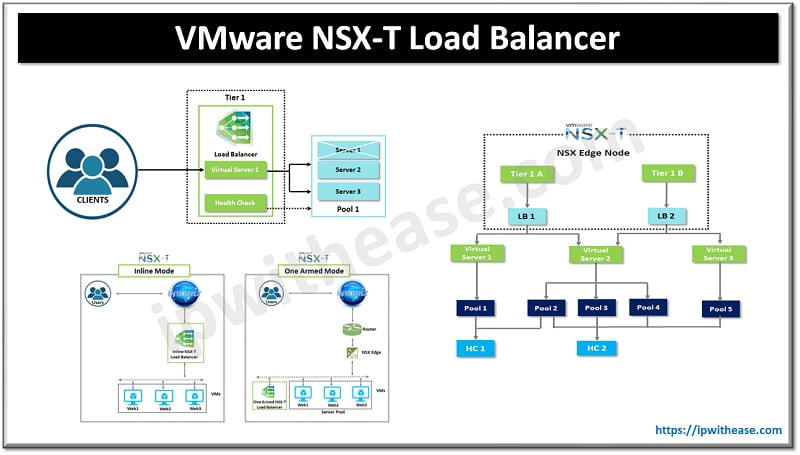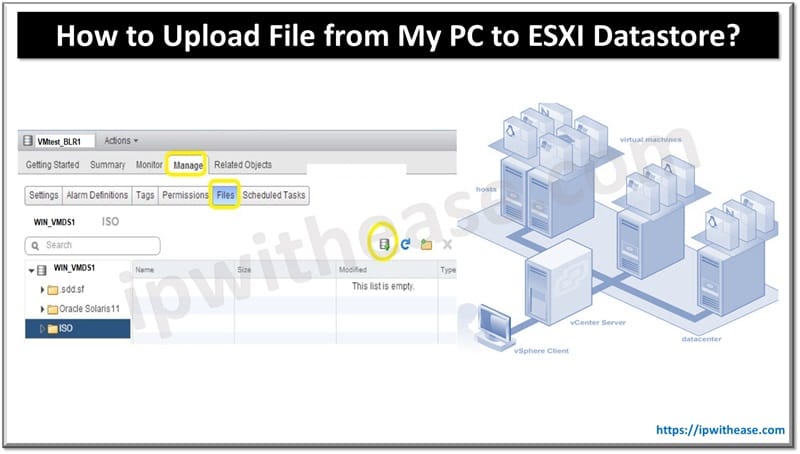Table of Contents
VDS and N-VDS are virtual switches in the VMWare NSX-T. VDS is a centralized virtual switch in VMware vSphere that manages networking across multiple ESXi hosts. And N-VDS is a virtual switch used specifically with VMware NSX-T for advanced networking and security in software-defined data centers.
Today we look more in detail about two most popular switch architectures in virtualization from VMware namely VDS (vSphere distributed switch) and N-VDS (NSX virtual distributed switch), what is the difference between the two types of switches, features etc.
VMWare Virtual Switches
In the era of cloud computing networking has also taken a great leap and many new technologies have emerged to leverage networks to support performance and scalability of critical applications hosted over cloud. Technologies like SD-WAN, virtual switching etc. are few to name them.
Virtualization is the backbone for both cloud and networking and VMware is a pioneer in virtualization solutions and has introduced different kinds of virtual switches into the vSphere environment. There is vSphere distributed switch (VDS), and new NSX virtual distributed switch (N-VDS).
What is VDS?
A vSphere distributed switch (VDS) gives centralized management and monitoring of all hosts networking configuration associated with that switch. Distributed switch can be set up over vCenter server system and its settings are propagated to all hosts linked to that switch.
vSphere distributed switch separates data and management plane. The management plane functionality resides on vCenter server which lets administrators manage networking configurations at data center level.
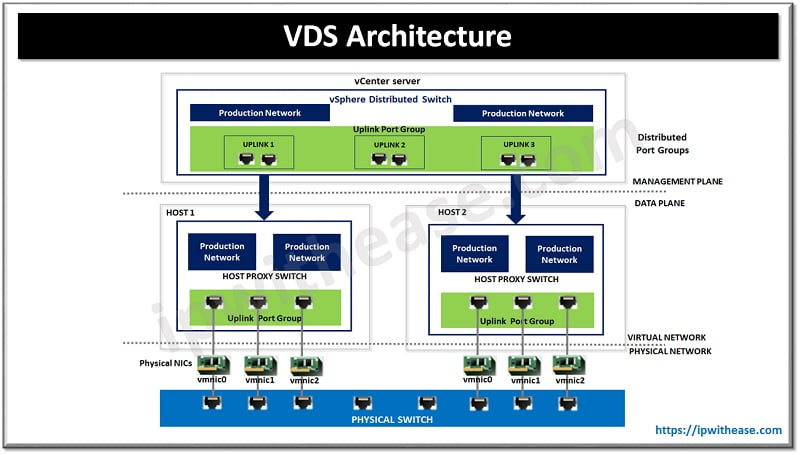
The data plane is local on every host associated with that switch. The data plane section of the switch is known as Host proxy switch. The networking configuration created at vCenter level is automatically pushed down to all host proxy switches.
What is N-VDS?
The new flavour of VMware virtual switch is NSX-T Virtual Distributed Switch (N-VDS). NSX-T comes with its own VDS type and it can be deployed without a vCenter server, so primarily it is not dependent on vCenter and can be used in different types of cloud environments.
It can provide network services to virtual machines running on both ESXi hypervisors and KVM hypervisors (which are built on Linux kernels). On an ESXi hypervisor N-VDS is implemented via a NSX switch module which is loaded into the hypervisor kernel.
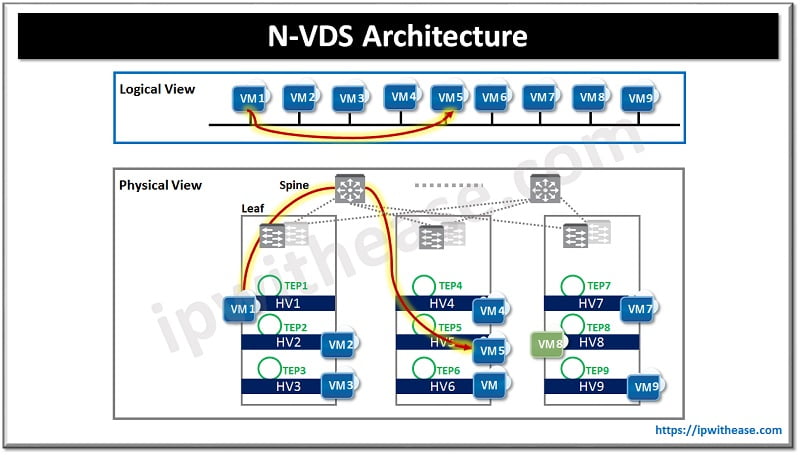
On a KVM hypervisor N-VDS is implemented via an open vSwitch (OVS) module for Linux kernel. The purpose of N-VDS is to forward traffic which runs on transport nodes. Transport nodes are hypervisor hosts and NSX edges which will participate in NSX-T overlay.
When a transport node is added to the transport zone the N-VDS associated with the transport zone is installed on the transport node. Each transport zone supports a single N-VDS having the same name as transport zone.
Comparison: VDS vs N-VDS
The key points of differences between the two are:
Deployment
VDS requires vCenter server for its deployment. Whereas, N-VDS do not require vCenter server for its deployment hence can be used outside of VMware vSphere environments.
Protocols
VDC uses VLAN overlay for encapsulation. While, N-VDS uses GENEVE (Generic Network Virtualization Encapsulation) overlay encapsulation protocol to provide better throughput to establish data transfer in a set amount of time.
Configuration
VDS is configured at vCenter server level and configuration is pushed to all ESXi hosts associated with this switch. On the other hand, N-VDS is deployed at hypervisor level and system maintains a table mapping of virtual components to physical network.
Usability
VDS is only suited for ESXi based environments. Whereas, N-VDS is suited for both ESXi hypervisors and KVM based hypervisors.
Architecture
The VDS architecture logically separate data and management planes. On the other hand, N-VDS is decoupled from vCenter and supports VLAN and overlay segments. It is managed by NSX manager.
Below table summarizes the differential points between the two:
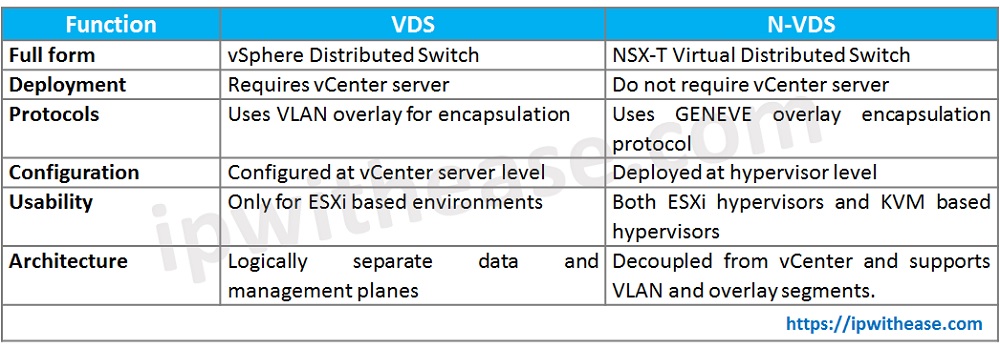
Download the comparison table: vds vs nvds
Continue Reading:
What is VMware NSX? Network Security Virtualization Platform
VMWare NSX-T vs NSX-v: Comprehensive Comparison
ABOUT THE AUTHOR

You can learn more about her on her linkedin profile – Rashmi Bhardwaj

